Transporting a canoe on a truck requires careful planning, proper equipment, and adherence to safety precautions to ensure secure boat transportation during your outdoor adventure road trip;
Transporting a canoe effectively is crucial for safe outdoor adventures. This guide covers essential techniques and equipment for successful canoe transport on trucks, enhancing your paddling experiences.
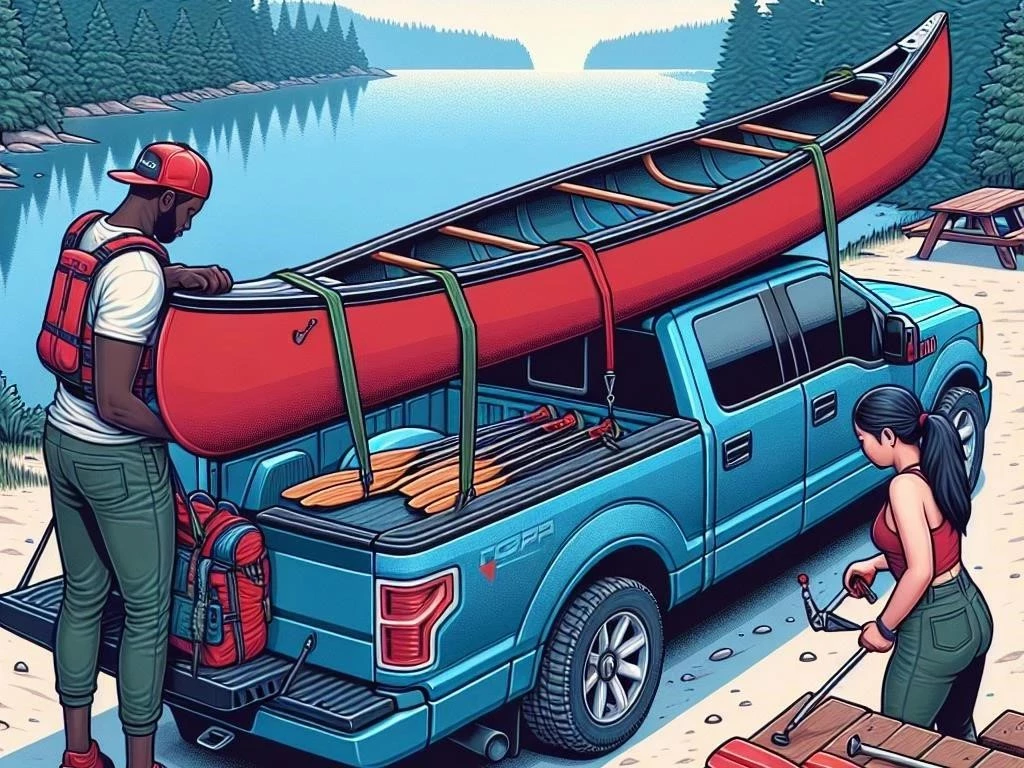
Importance of Canoe Transport
Efficient canoe transport is essential for ensuring safe and enjoyable outdoor adventures. Properly transporting your canoe allows you to reach remote paddling locations while maintaining the integrity of your canoe. When engaging in outdoor sports, understanding the significance of secure canoe transport can prevent potential accidents or damage during transit. It enhances your overall experience by minimizing the risk of canoe damage and loss. Additionally, using the right transport equipment, such as a canoe rack and tie-down straps, ensures your canoe remains stable and secure during travel. This attention to detail not only promotes safety but also improves the ease of loading and unloading your canoe. Ultimately, mastering canoe transport techniques leads to successful road trips and memorable outdoor adventures, allowing you to focus on paddling and enjoying nature without worry.
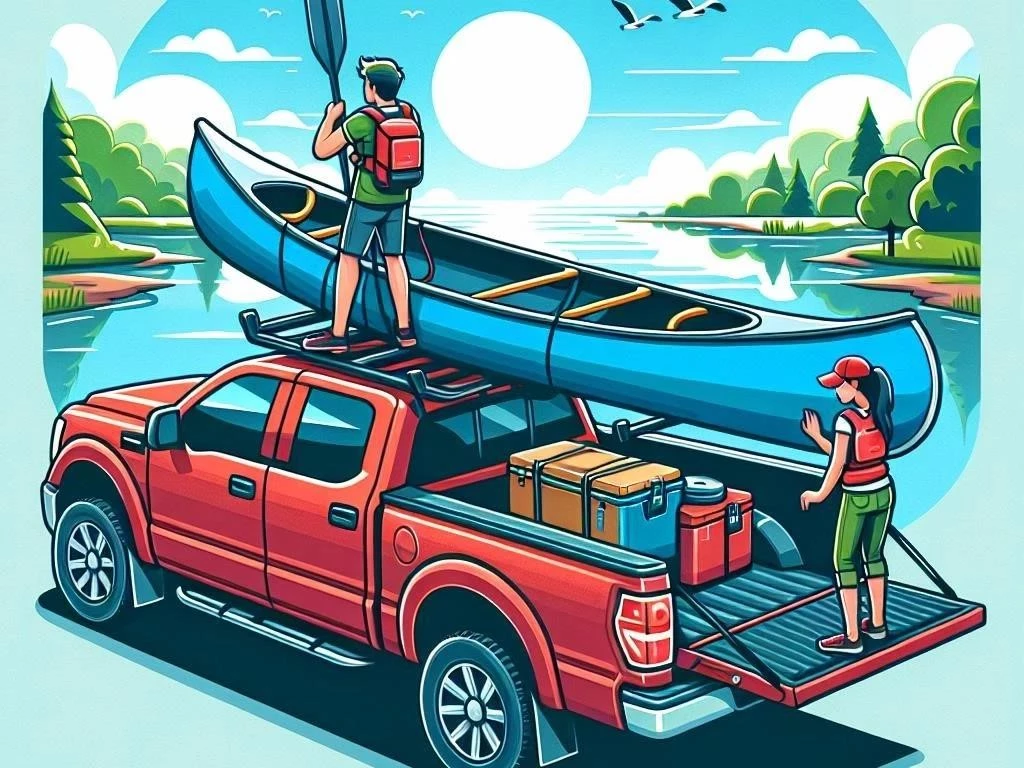
Overview of Truck Loading Techniques
Loading a canoe onto a truck requires specific techniques to ensure safe transport. First, choose a suitable truck with a strong roof rack or bed. If using a roof rack, ensure it is compatible with your canoe’s size. Begin by positioning the canoe parallel to your vehicle, making it easier to lift. With the help of a buddy, lift the canoe, ensuring that its weight is evenly distributed. Carefully place it onto the roof rack or truck bed while maintaining balance. Once the canoe is in position, use tie-down straps to secure it firmly, preventing any movement during transit. Always double-check that the canoe is stable and secure before hitting the road. Remember to drive cautiously and avoid sudden maneuvers, as this ensures a safe journey while transporting your canoe to your next outdoor adventure destination.
Choosing the Right Equipment
Selecting appropriate equipment for canoe transport is vital. Consider canoe racks, tie-down straps, and vehicle accessories that enhance safety and stability during your outdoor adventure road trip.
Essential Transport Equipment for Canoes
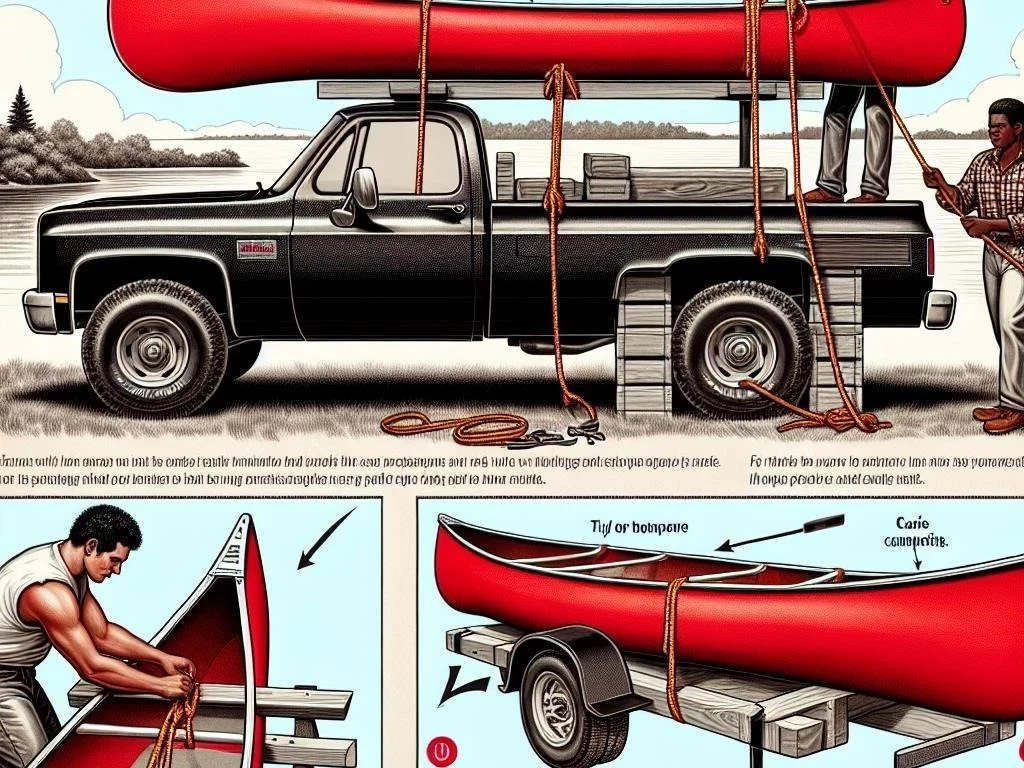
When transporting a canoe, having the right equipment is crucial for ensuring safety and stability during your outdoor adventures. First, invest in a durable canoe rack that is compatible with your vehicle, whether it’s a roof rack or truck bed setup. This provides a secure platform for your canoe while traveling. Additionally, high-quality tie-down straps are essential for securing your canoe in place. Look for straps designed specifically for boat transportation, as they offer better grip and durability. Consider using foam blocks or pads to protect your canoe’s hull from scratches and dents during transport. Moreover, a safety flag or light can be beneficial for visibility, especially if your canoe extends past your vehicle. Finally, don’t forget to carry essential camping supplies and paddling gear, ensuring a smooth and enjoyable outdoor experience.
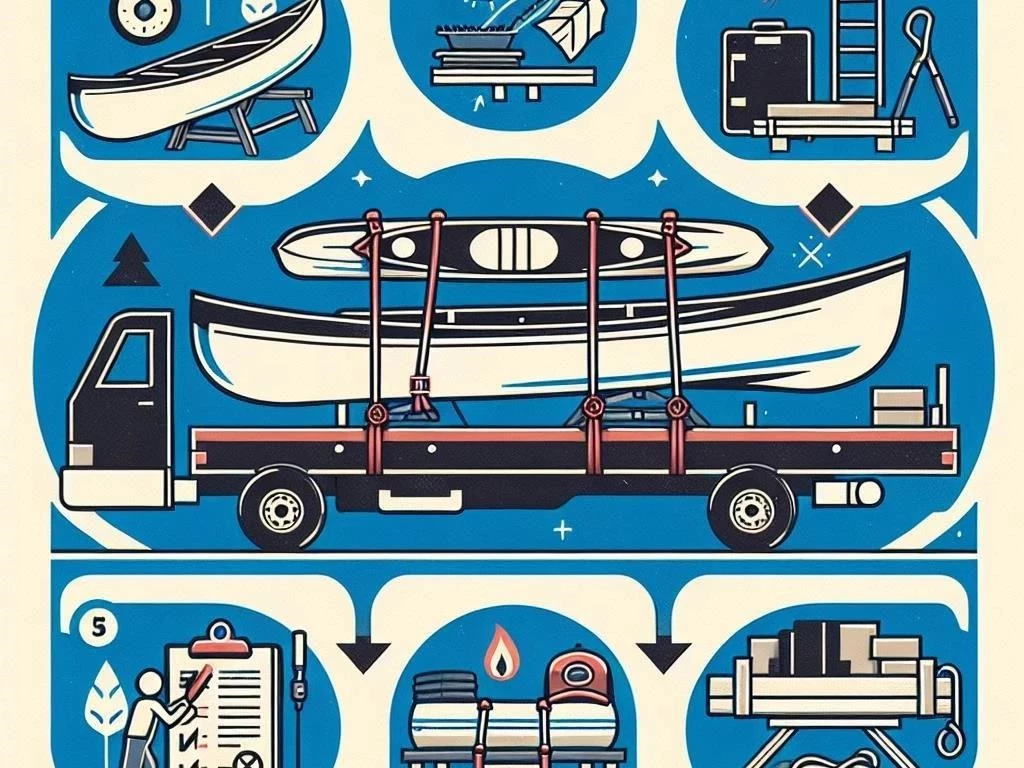
Vehicle Accessories Needed for Canoe Transport

Equipping your vehicle with the right accessories is vital for safe canoe transport. Start with a reliable roof rack or truck bed extender, which provides a stable platform for your canoe. Ensure that the rack is compatible with your vehicle type to avoid any safety issues. Next, high-quality tie-down straps are essential; choose straps that are designed specifically for boat transportation. These straps should be adjustable to accommodate different canoe sizes. Consider adding foam padding or cradles to minimize damage to both your vehicle and canoe during transport. A safety flag or light is helpful for increased visibility, especially for longer canoes extending beyond your vehicle. Additionally, having a sturdy storage bag for paddling gear and camping supplies can keep everything organized and accessible during your outdoor adventures. Proper vehicle accessories enhance safety and convenience while transporting your canoe.
Preparing Your Canoe for Transport
Properly preparing your canoe for transport ensures its safety during travel. Conduct inspections, perform maintenance, and secure all paddling gear before embarking on your outdoor adventure road trip.
Inspecting Your Canoe for Damage
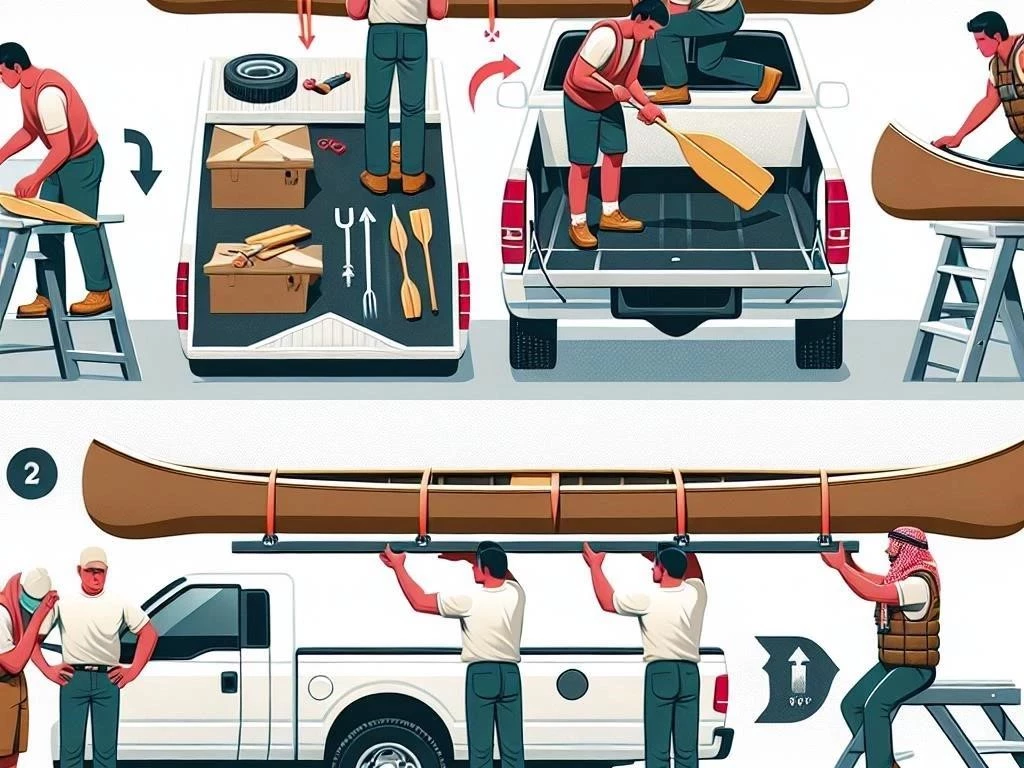
Before transporting your canoe, conducting a thorough inspection for damage is essential. Start by examining the hull for any visible cracks, dents, or scratches that may have occurred during previous use. Pay attention to the seams and joints, as these areas are prone to wear and tear. If you find any damage, consider performing necessary repairs before transport to ensure water safety and performance. Next, check the canoe’s hardware, including handles, foot braces, and any other components, ensuring everything is secure and functional. Inspect the interior for any debris or leftover water, which could lead to mold or mildew during transport. Lastly, ensure that any additional paddling gear is properly stowed away. By carefully inspecting your canoe, you help guarantee a safe and enjoyable outdoor adventure while significantly reducing risks during transportation.
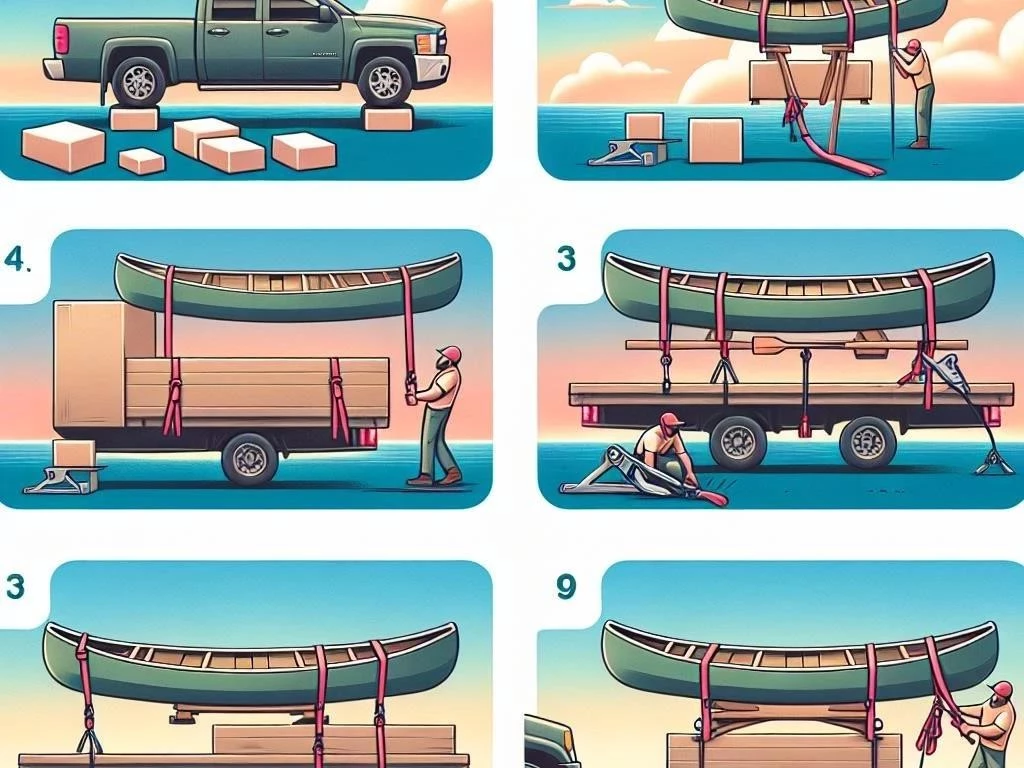
Canoe Maintenance Tips Before Transport
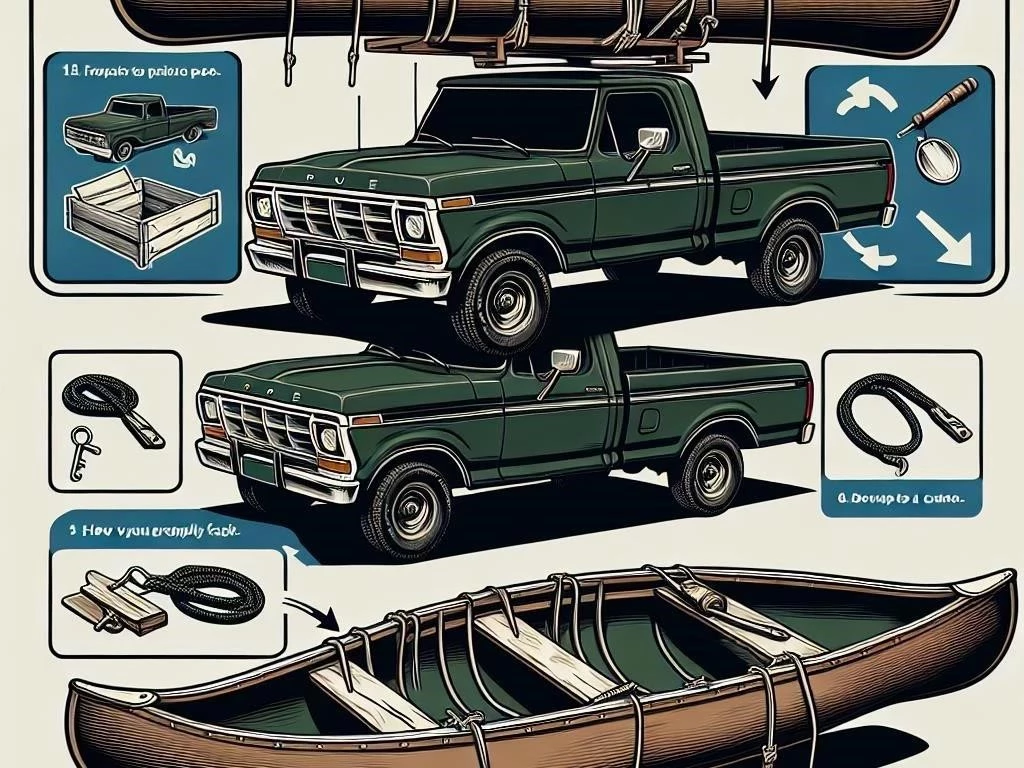
Maintaining your canoe before transport is crucial for ensuring its longevity and performance. Begin by thoroughly cleaning the canoe with mild soap and water, removing dirt, algae, and any debris accumulated during previous outings. Rinse well and dry completely to prevent mold and mildew. Next, apply a protective wax or sealant to the hull, which helps shield against UV damage and scratches. Inspect and tighten any loose hardware, ensuring that handles, foot braces, and any other fittings are secure. If your canoe has a wood finish, consider applying a wood preservative to protect against moisture. Additionally, check for any signs of wear on the paddling gear, replacing damaged items as necessary. Finally, ensure that all storage compartments are organized and free of water, providing a clean and efficient setup for your outdoor adventure.
Securing Your Canoe
Properly securing your canoe is essential for safe transport. Use a canoe rack and high-quality tie-down straps to prevent movement during travel, ensuring a smooth outdoor adventure.

Using a Canoe Rack
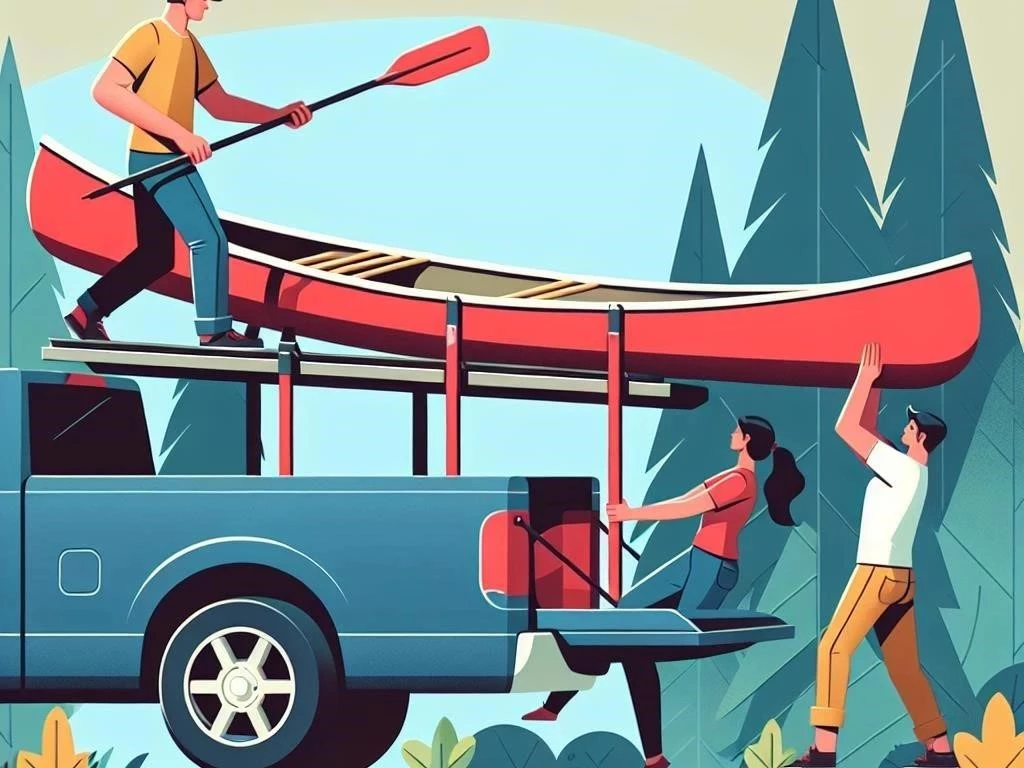
Utilizing a canoe rack is essential for safe and effective transport. A suitable rack can be mounted on your truck’s roof or in the bed, providing a stable platform. When selecting a canoe rack, ensure it is compatible with your vehicle type and can accommodate the length and width of your canoe. Before loading, familiarize yourself with the rack’s installation instructions to ensure proper setup. Once ready, lift the canoe onto the rack, ensuring it sits evenly and securely. Position the canoe upside down on the rack to minimize wind resistance during travel. Finally, use tie-down straps to secure the canoe firmly, passing them over and under the rack. Regularly check the straps during your journey to ensure they remain tight. Using a canoe rack not only protects your canoe but also enhances overall transport safety, making your outdoor adventures more enjoyable.
Best Practices for Tie-Down Straps
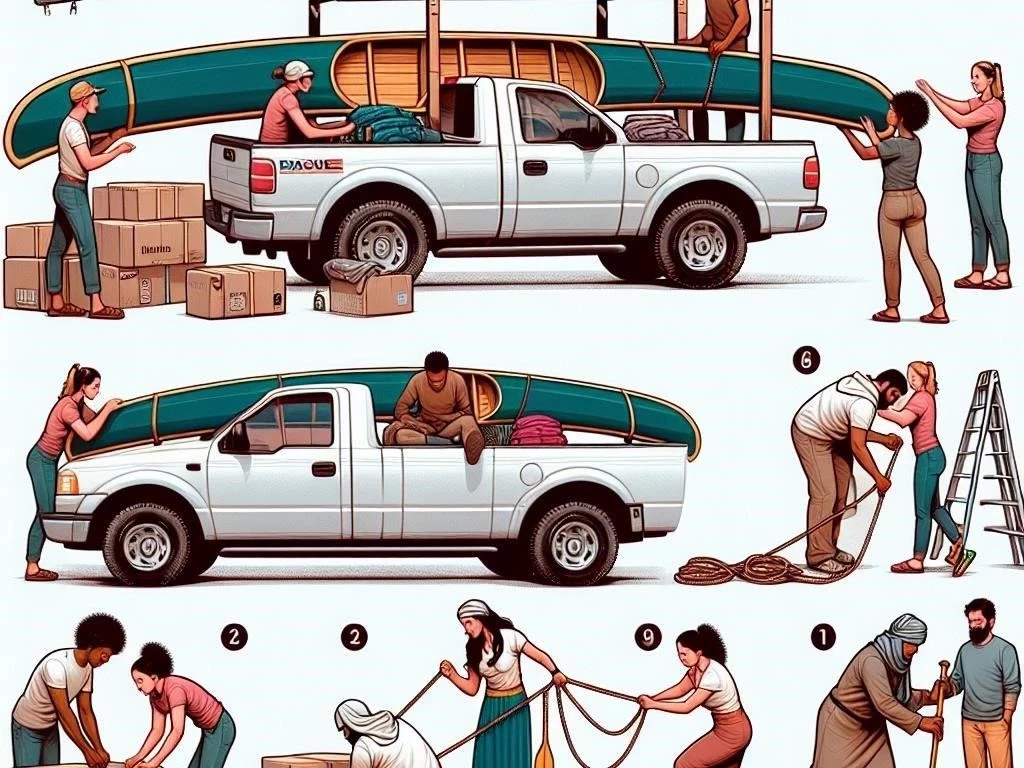
Using tie-down straps correctly is vital for securely transporting your canoe. Start with high-quality, durable straps specifically designed for boat transportation. When securing your canoe, use at least two straps, one at the front and one at the rear, to provide balanced support. Ensure the straps are threaded through the canoe’s gunwales, avoiding any contact with the hull to prevent scratches. Tighten the straps firmly, but be cautious not to over-tighten, as this can cause damage. Use cam buckle straps or ratchet straps for easy adjustments, allowing you to achieve a snug fit. Periodically check the straps during your journey, especially after stops, to ensure they remain tight. Lastly, avoid using rope alone, as it can slip and create instability. Following these best practices enhances your canoe’s security and ensures a safe, enjoyable outdoor adventure.
How to Secure Canoe on a Roof Rack
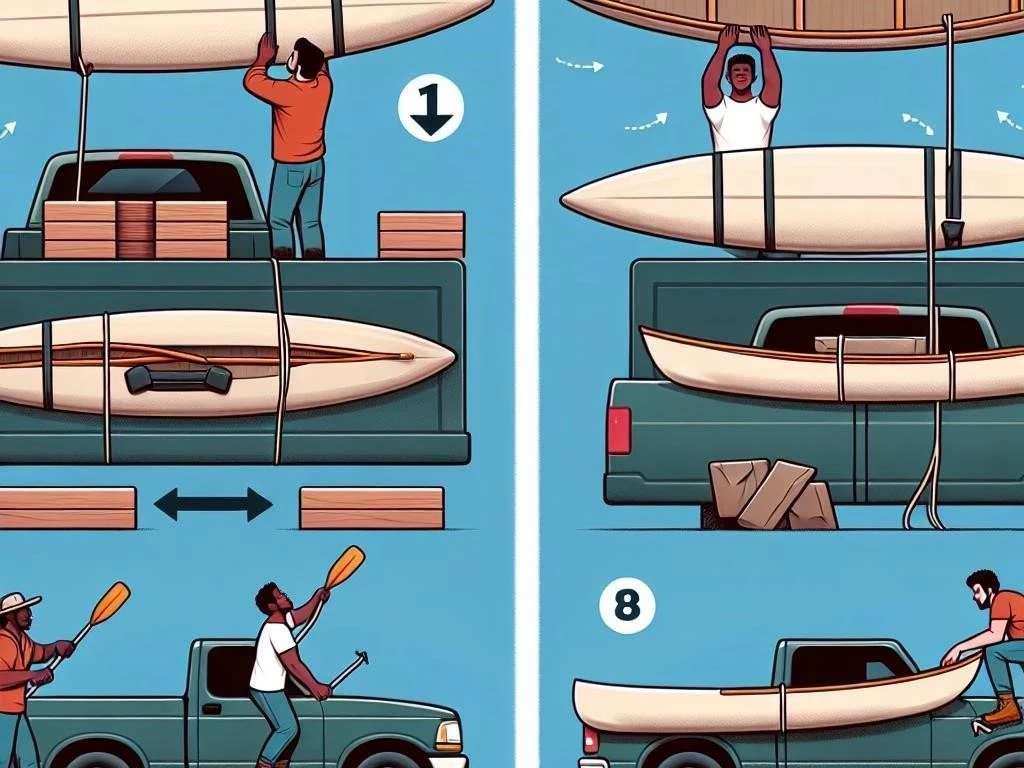
Securing your canoe on a roof rack is essential for safe transport. Start by placing the canoe upside down on the rack, which minimizes wind resistance; Ensure that the canoe is centered on the rack to distribute weight evenly. Next, use foam pads or cradles to protect the canoe’s hull and prevent slipping. Once positioned, take high-quality tie-down straps and loop them over the canoe, threading them through the rack’s crossbars. Make sure the straps are tight but not overly so to avoid damaging the canoe. After securing, double-check that the canoe is stable and does not shift when pushed gently. It’s also helpful to attach a safety strap at the front and back of the canoe to the vehicle, providing an additional layer of security. Following these steps ensures your canoe is safely secured for your outdoor adventure.
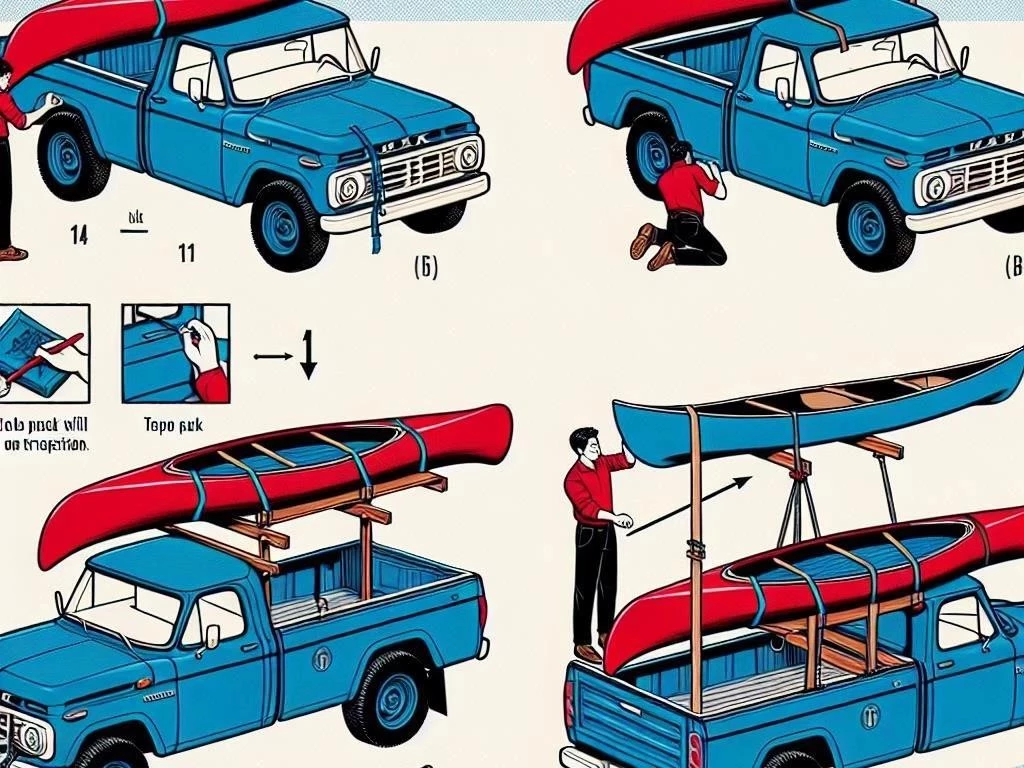
Loading the Canoe onto the Truck
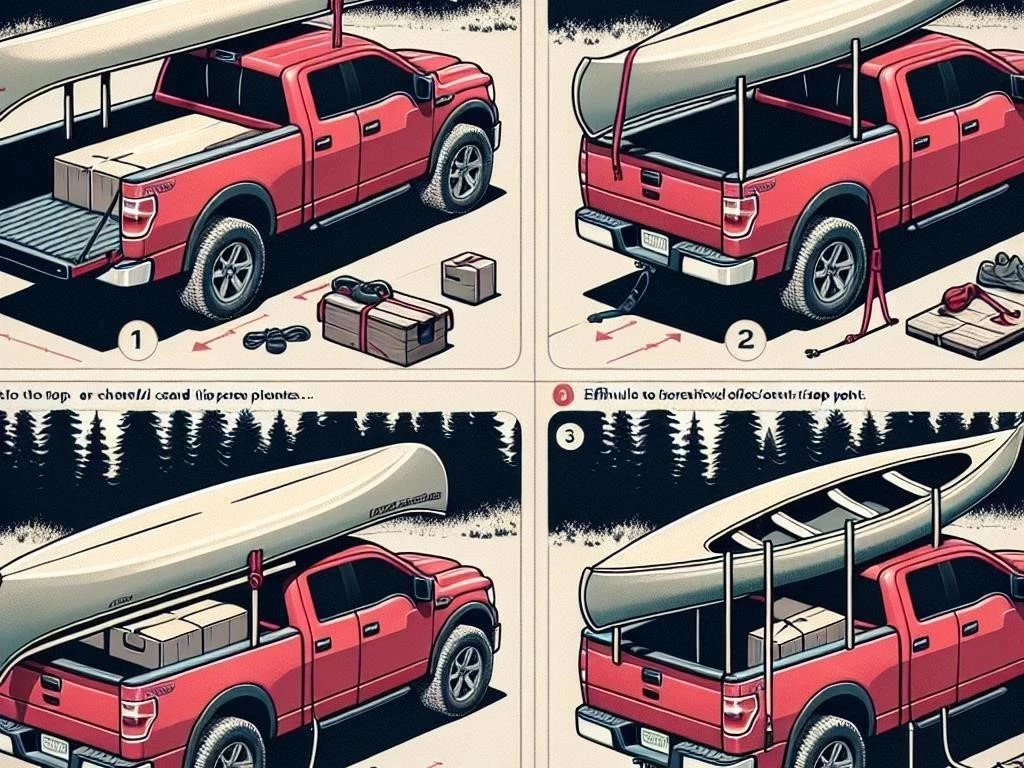
Effectively loading your canoe onto the truck requires proper technique and teamwork. Follow these steps carefully to ensure safe and efficient transport for your outdoor adventure.
Step-by-Step Guide to Truck Loading
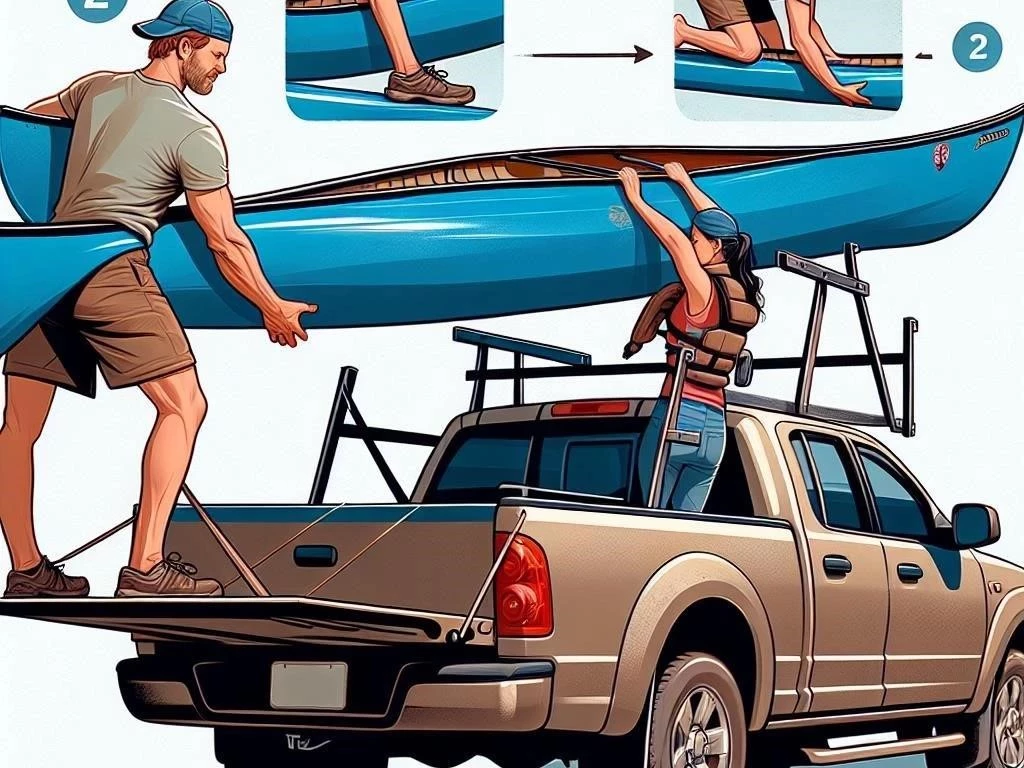
Loading your canoe onto a truck requires careful attention to detail to ensure safety. Begin by gathering your equipment and having a partner assist you. Position the canoe parallel to your truck, making it easier to lift. Lift the canoe from the center, ensuring that both you and your partner maintain even weight distribution. If using a roof rack, carefully lift the canoe overhead, positioning it securely onto the rack. For pickup trucks, tilt the canoe slightly to slide it into the bed while keeping it balanced. Once the canoe is in place, check that it sits evenly on the rack or in the truck bed. Finally, use tie-down straps to secure the canoe, making sure the straps are tight and properly threaded through the canoe’s gunwales. Following these steps ensures a smooth and secure loading process for your outdoor adventures.
Using a Pickup Truck for Hauling Canoes
Hauling canoes with a pickup truck can be highly effective and convenient for outdoor adventures. Start by ensuring your truck bed is clean and free from debris that could scratch or damage the canoe. Position the canoe in the truck bed, ideally with the bow facing forward to minimize wind resistance. If the canoe extends beyond the truck’s tailgate, use a red safety flag to alert other drivers. Consider using a truck bed extender to provide additional support for longer canoes, enhancing stability during transport. Secure the canoe using high-quality tie-down straps, attaching them to the truck’s anchor points for added security. Regularly check the straps during your journey to ensure everything remains tight. Additionally, driving cautiously and avoiding sudden maneuvers will help keep the canoe safe while enjoying your outdoor adventure and ensuring a smooth transport experience.
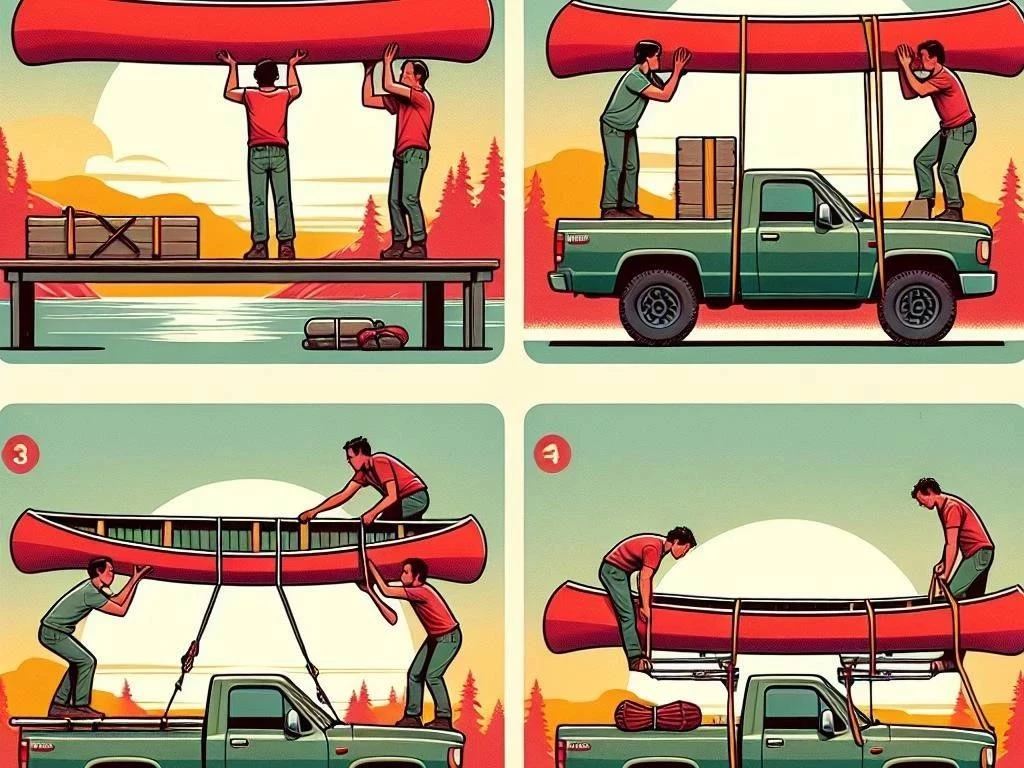
Safety Precautions During Transport
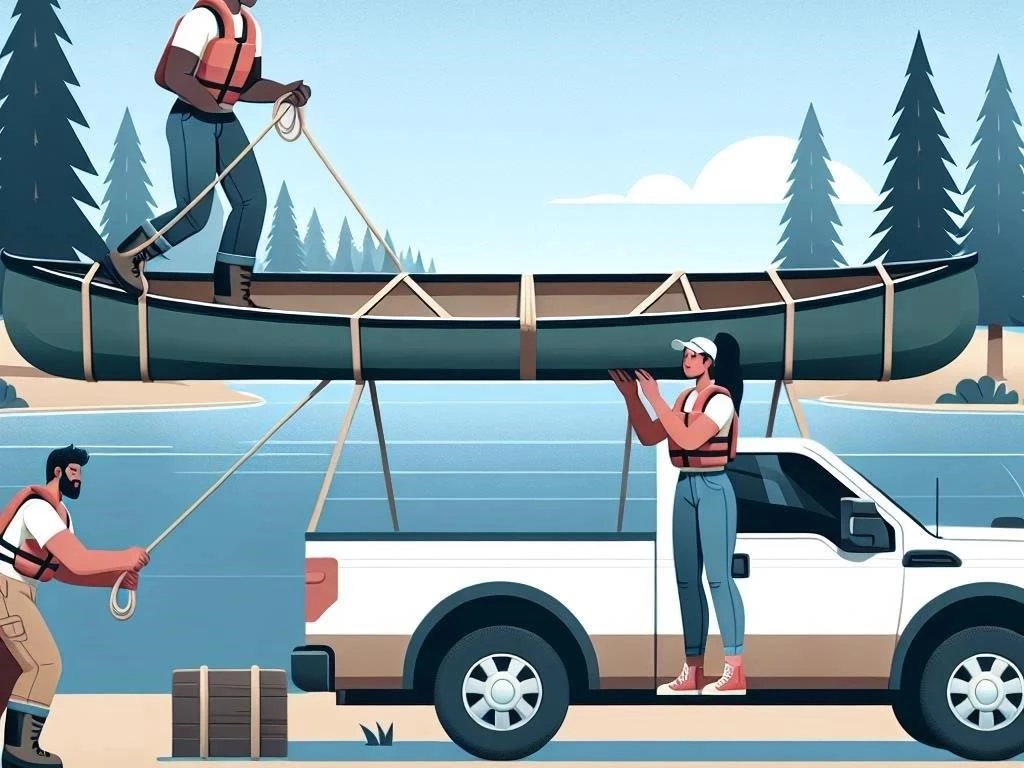
Implementing safety precautions during canoe transport is essential. Ensure secure tie-downs, check equipment before travel, drive cautiously, and be vigilant of road conditions to ensure a safe journey.
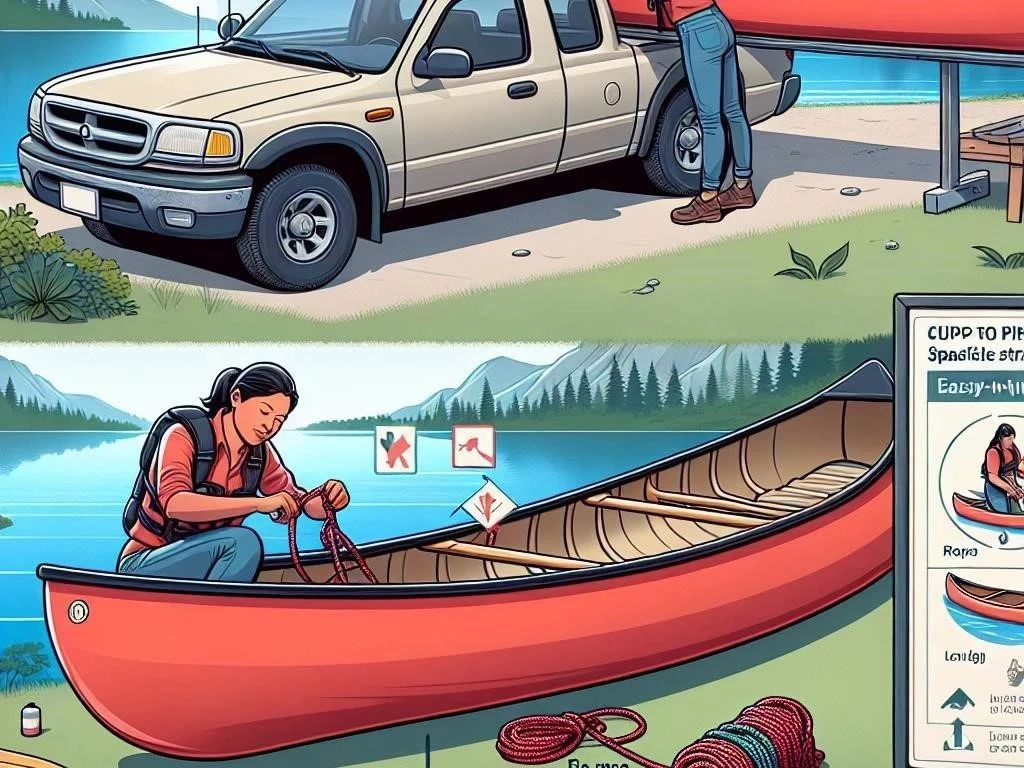
Canoe Safety Tips for Road Trips
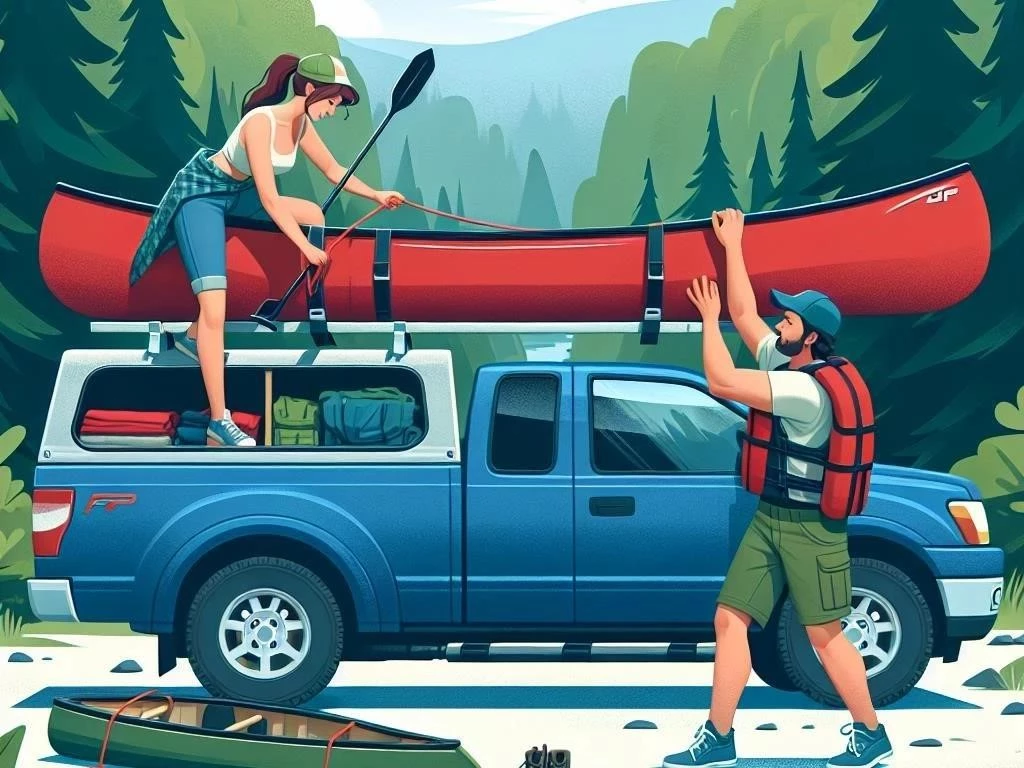
Ensuring canoe safety during road trips is critical for a smooth experience. First, thoroughly inspect your canoe and transport equipment before departure, checking for any damage. Secure the canoe properly using high-quality tie-down straps, ensuring it is stable and won’t shift during travel. Utilize a safety flag if the canoe extends beyond the vehicle, increasing visibility to other drivers. Avoid loading too much weight on one side, as this can affect vehicle stability. Drive cautiously, especially around corners and during sudden stops, and keep an eye on road conditions that may affect handling. Make regular stops to check the canoe’s security and adjust straps as needed. Lastly, familiarize yourself with local regulations regarding boat transport, as certain areas may have specific requirements. Following these tips ensures a safe and enjoyable road trip with your canoe.
Common Mistakes to Avoid While Hauling Canoes
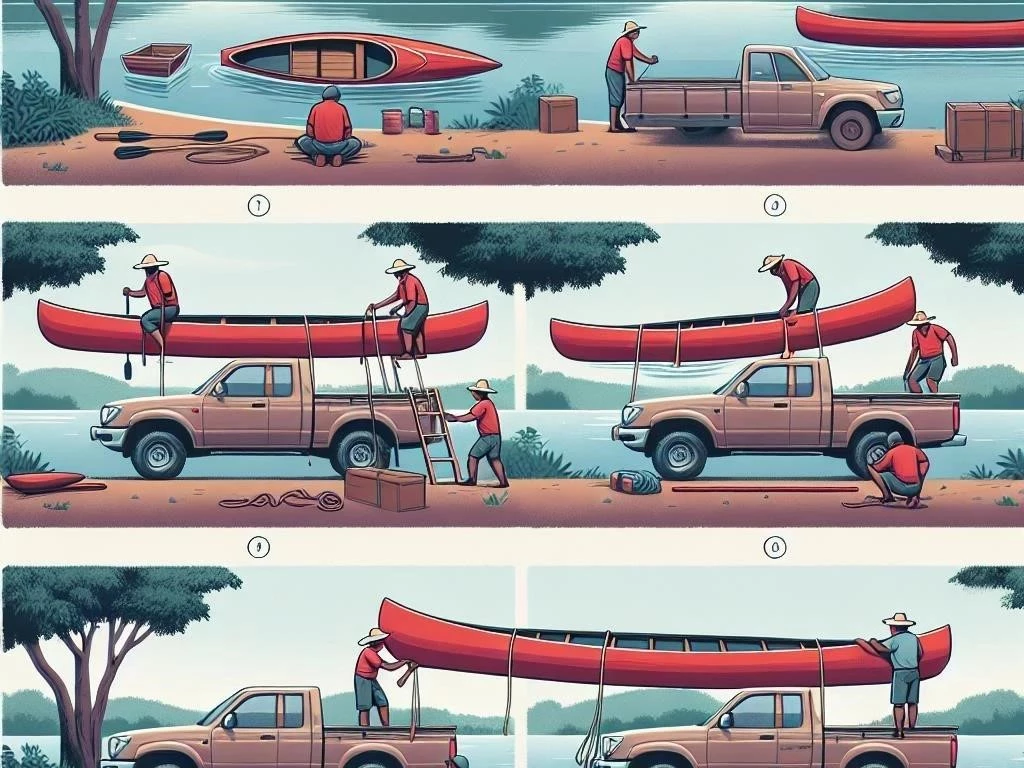
Avoiding common mistakes while hauling canoes is crucial for safe transport. One frequent error is neglecting to inspect the canoe and transport equipment beforehand, which can lead to unexpected issues. Another mistake is using inadequate or worn-out tie-down straps that may not secure the canoe properly. It’s also essential to avoid overloading the vehicle, as this can compromise stability and handling. Many people forget to check the canoe’s position during stops, leading to shifting and potential hazards. Additionally, failing to use a safety flag when the canoe extends beyond the vehicle can result in accidents. Driving too fast or making sudden maneuvers can also pose risks. Lastly, don’t overlook local regulations on canoe transport, as compliance ensures safety and avoids fines. By steering clear of these mistakes, you’ll enhance the safety of your outdoor adventures.
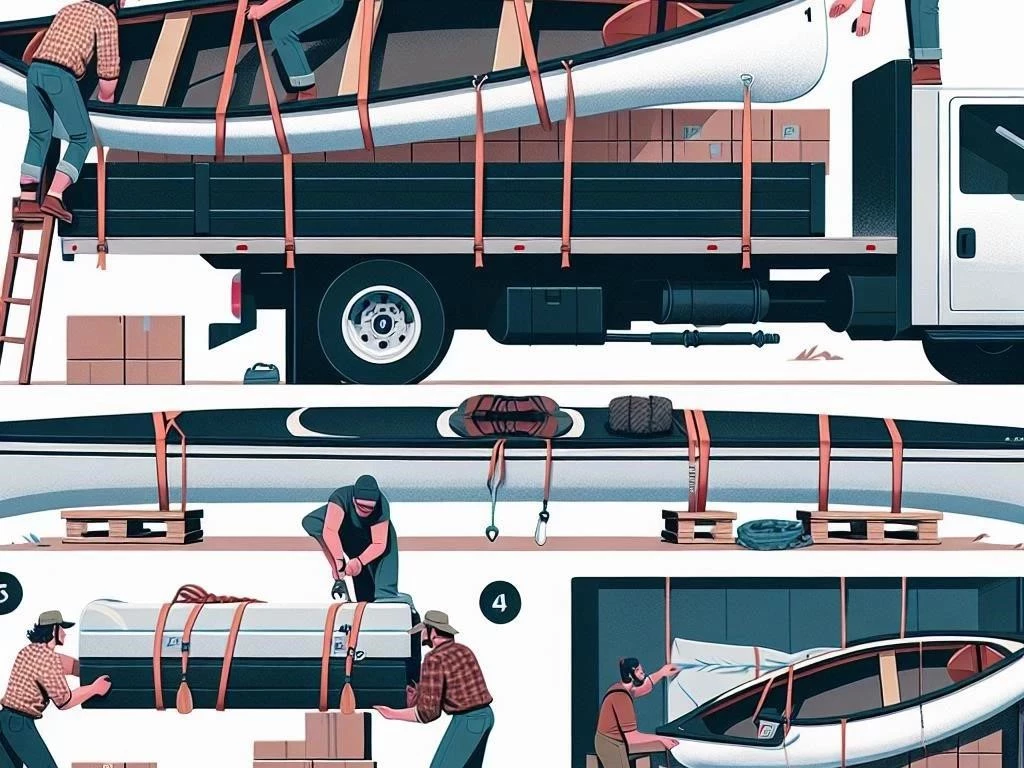
Travel Tips for Outdoor Adventures
When planning outdoor adventures, prioritize organization and preparation. Pack essential paddling gear, canoe maintenance supplies, and camping items to ensure a seamless and enjoyable experience while traveling.
Paddling Gear to Bring Along
Bringing the right paddling gear is essential for a successful outdoor adventure. Start with quality paddles, ensuring you have the appropriate size for your canoe and comfort during use. Additionally, pack a personal flotation device (PFD) for each person, as safety should always be a priority on the water. Consider bringing a canoe cart for easier transportation from the truck to the water, especially if you’re navigating rough terrain. Waterproof bags or dry sacks are crucial for keeping essential items, like snacks, clothing, and first-aid supplies, dry during your trip. Don’t forget a whistle for signaling emergencies and a map or GPS device for navigation. Sunscreen and insect repellent are also important for protection against the elements. Finally, a repair kit is advisable for quick fixes to any gear issues that may arise during your adventure.
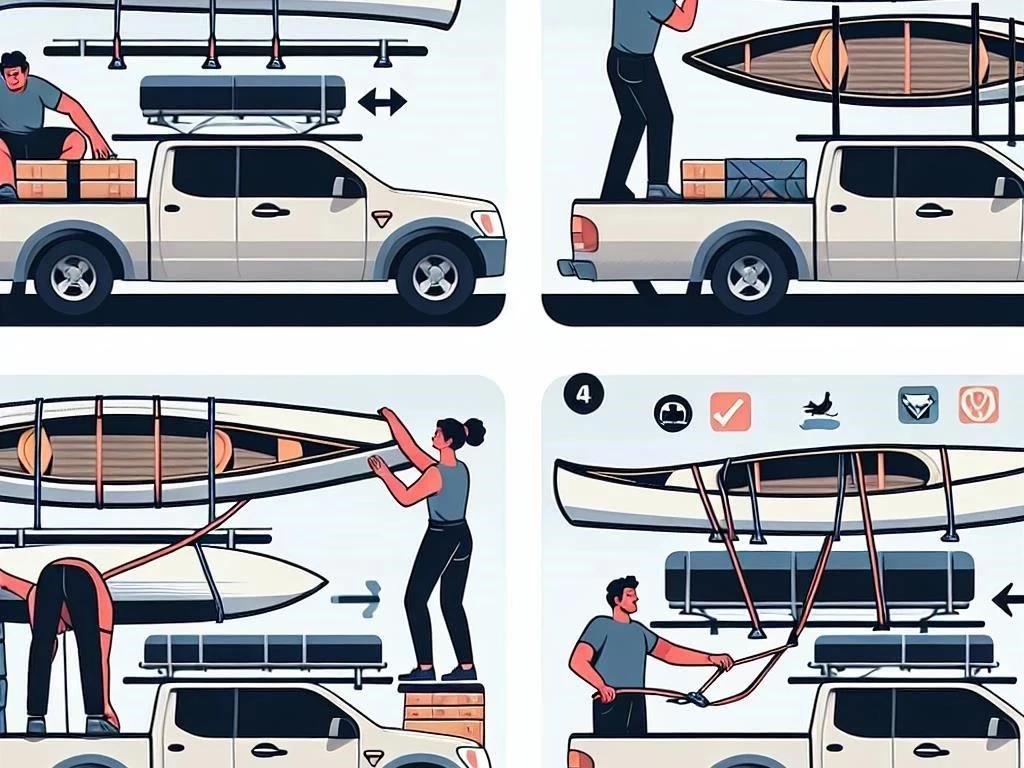
Canoe and Camping Supplies Checklist
Creating a comprehensive checklist for canoe and camping supplies ensures a successful outdoor adventure. Start with essential canoeing gear: paddles, personal flotation devices (PFDs), and a canoe repair kit for emergencies. Include a waterproof bag for keeping valuables dry, and consider bringing a canoe cart for easier transport. For camping, pack a durable tent, sleeping bags, and sleeping pads for comfort. Ensure you have a portable stove or cooking equipment, along with utensils and dishes. Don’t forget food supplies, snacks, and plenty of water to stay hydrated. A first-aid kit is crucial for safety, alongside insect repellent and sunscreen for protection against the elements. Bring a flashlight or headlamp for nighttime visibility, and consider fire-starting materials if camping overnight. Lastly, include a map or GPS device for navigation, ensuring a smooth and enjoyable experience during your trip.
Successfully transporting a canoe on a truck requires careful preparation, secure loading, and adherence to safety precautions. Enjoy your outdoor adventures by following these essential transport techniques and tips.
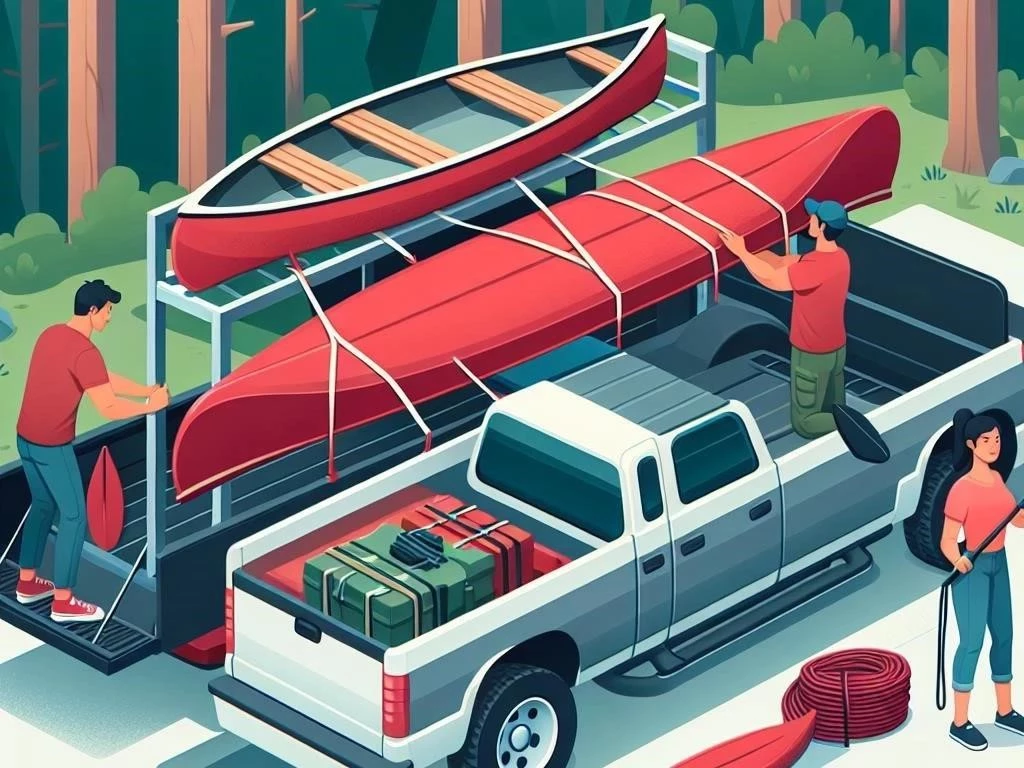
Recap of Important Transport Techniques
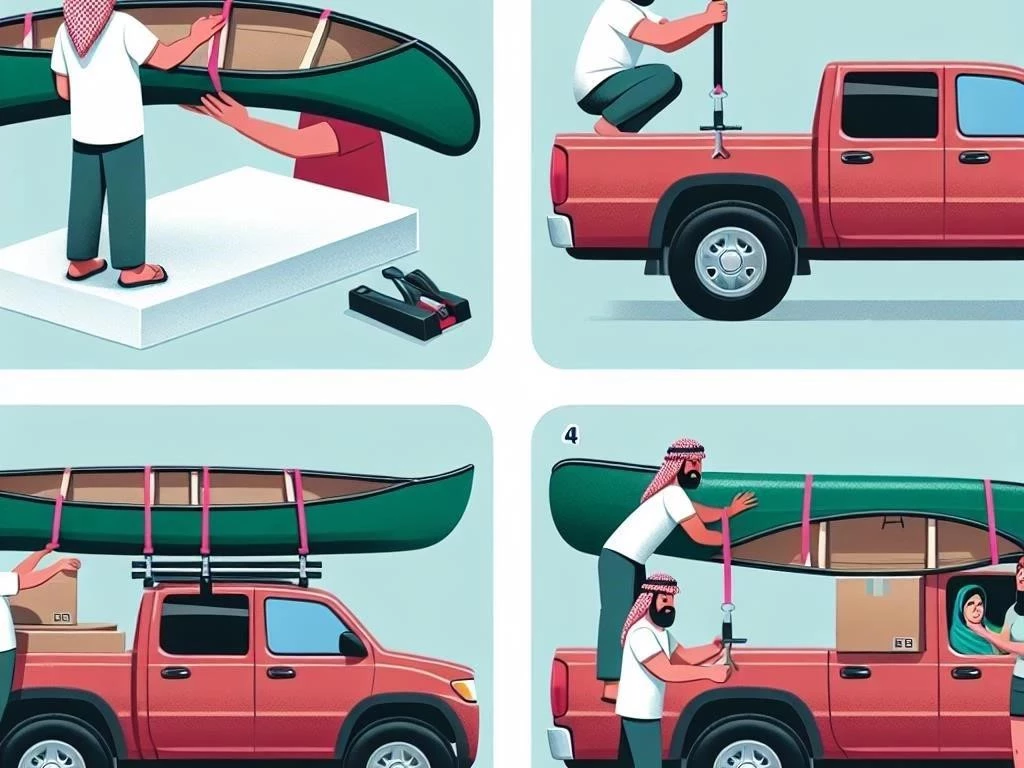
Transporting a canoe on a truck effectively involves several key techniques to ensure safety and security. First, inspect your canoe and transport equipment thoroughly before departure to identify any issues. When loading, lift the canoe evenly with assistance, ensuring it is centered on the rack or in the truck bed. Utilize a canoe rack or foam pads for added protection and stability. Secure the canoe with high-quality tie-down straps, making sure they are tight but not overly so to avoid damage. Regularly check the straps during travel, especially after stops. If using a pickup truck, consider a bed extender for longer canoes and always attach a safety flag if the canoe exceeds the tailgate. Following these techniques will help ensure a smooth, safe transport experience, allowing you to focus on enjoying your outdoor adventures without worry.
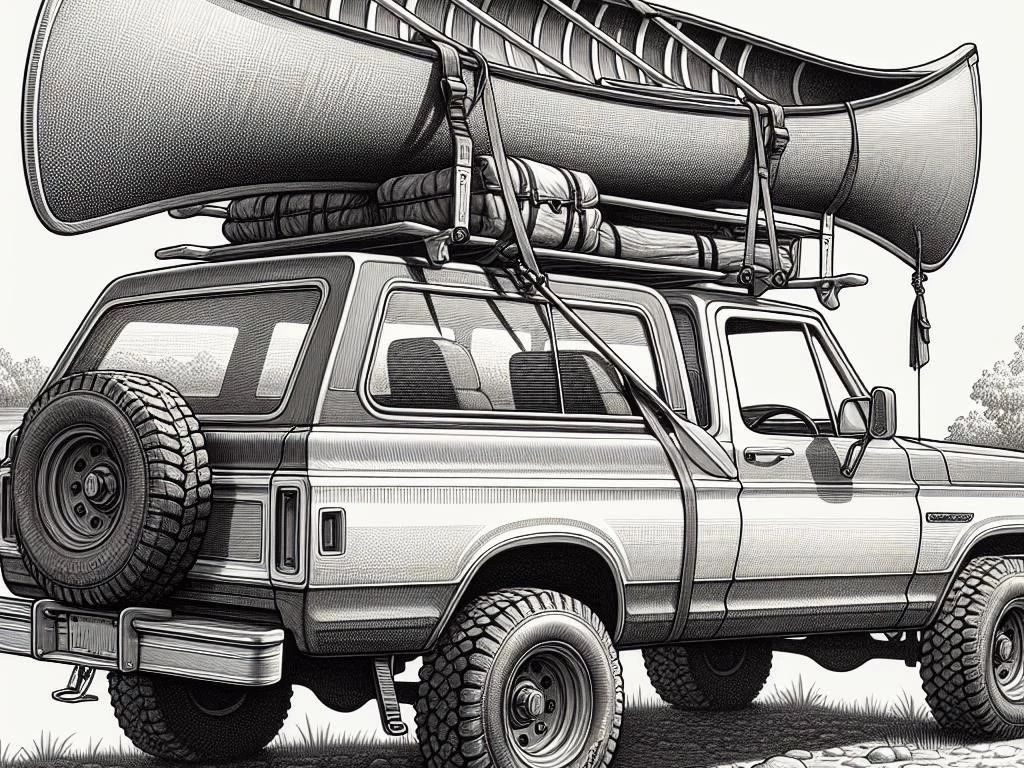
Encouragement for Outdoor Sports and Adventures
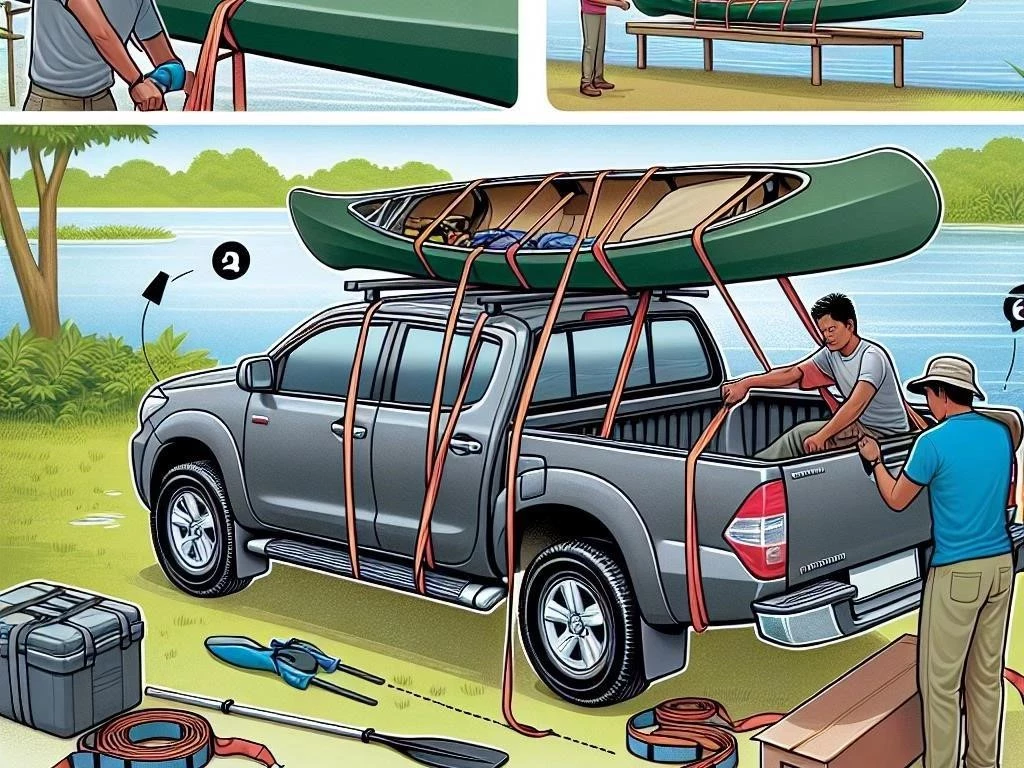
Engaging in outdoor sports and adventures, such as canoeing, offers incredible opportunities for exploration and connection with nature. Embrace the thrill of paddling through serene waters, discovering hidden coves, and experiencing the beauty of the great outdoors. Canoeing not only promotes physical fitness but also fosters mental well-being by providing a refreshing escape from daily routines. Whether you’re a seasoned paddler or a beginner, every journey presents unique challenges and rewards. Gather friends or family for a shared experience, creating lasting memories while enjoying the camaraderie of outdoor activities. Remember to prioritize safety and preparation, ensuring that your adventures are enjoyable and worry-free. So gear up, load your canoe securely on your truck, and set out on your next journey. The world is waiting for you to explore, and every adventure begins with a single paddle stroke!